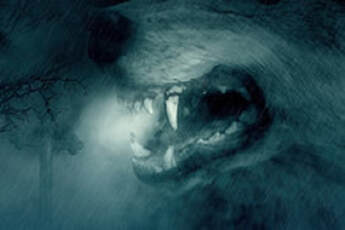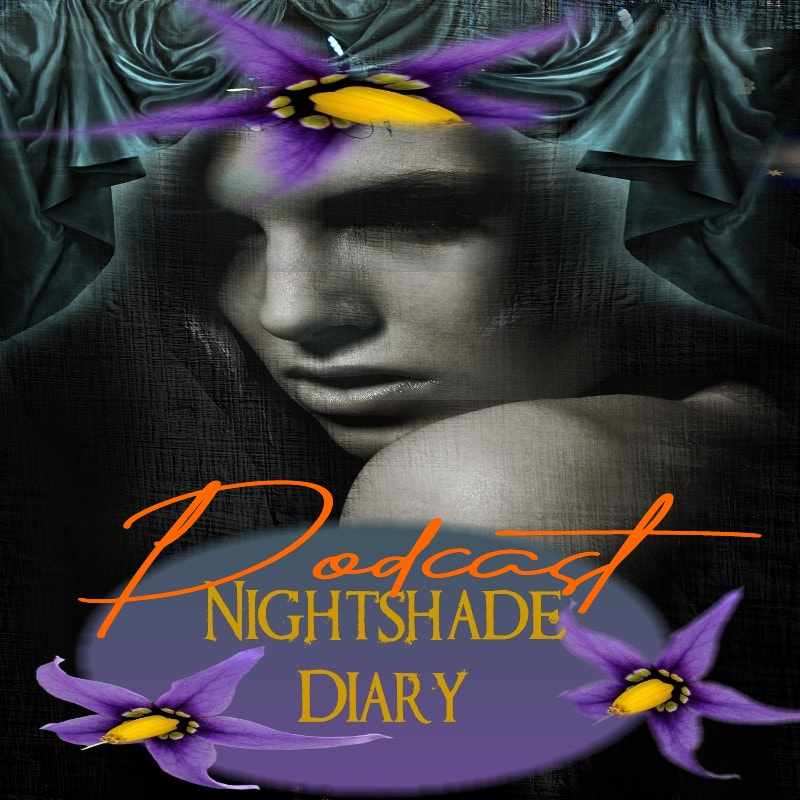 By M.P. Pellicer | Stranger Than Fiction Stories If you visit a cemetery you might have some trepidation, mostly because you don't want to come face-to-face with the restless shade of someone interred on the grounds. The last thing you expect will cross your path is a werewolf.  Illustration made of the Werewolf of Camberwell Illustration made of the Werewolf of Camberwell A strange hybrid creature has been seen twice at an old cemetery in south London. British cryptid researcher Andy McGrath came across two eyewitnesses. His conversations with them made him wonder if they were mistaken, because the idea of a bipedal dogman seemed impossible. Whether the creature was real or not, it was dubbed the "Werewolf of Camberwell." Andy McGrath who considered himself a skeptic, is not sure exactly what the witnesses saw, but whatever it was frightened them profoundly. The second encounter occurred in 2004, and two persons described the event to him thus: We heard a low growl. Then a large tree in the corner of the cemetery was shaking incredibly hard as if something really powerful was shaking it with all its might. It was definitely not made by a person or an animal. The tree looked as if the roots were ready to be ripped out.  Sketch of Camberwell Dog Man submitted by eyewitness (Gary). Sketch of Camberwell Dog Man submitted by eyewitness (Gary). The first encounter dating to October 9, 1996, was reported by a man who said his name was Gary, 26, and it appeared on Linda Godfrey's blog. He said he took Underhill Road to meet a friend. This route brought him to Camberwell New Cemetery, and through the length of Brencley Garden, then around Camberwell Old Cemetery. He took a shortcut through the old cemetery, even though night had fallen. There was no lighting on the grounds, and he had no flashlight. This slowed him down a bit since he could only see a few feet in front of him. He normally rode his bike to meet his friend, but their plans would have made it inconvenient. Perhaps he wondered if taking this shortcut was a wise decision when halfway through the graveyard, he saw the movement of something large. He said, "I swear I saw what I thought was a dog, a big dog, move very quickly." Like most persons, he thought it was his eyes and his imagination playing tricks on him, and he started off again with quickened steps. Gary described it as: It was then in a flash my life changed forever. It was so quick that I never had a chance–I thought that somebody had literally run into me and knocked me over… Something had grabbed me by my arm VERY tightly and smashed me to the ground. It was big, it was powerful, and it had extremely bad breath and it smelt cold and awful. This thing was now bearing down on me looking directly at my face, dribbling onto me and growling. I was convinced I was going to die. I am afraid to say that as brave as I think I might be I was not, at this point, and shamefully I soiled myself. As I lay there being smelled I was waiting for the bite, but that never happened. Just as quick as it started it was over and the beast was gone and sprinted off in a flash.  Memorial in Camberwell Old Cemetery, to 21 civilians killed by Zeppelin bombings in 1917 c.2018 Memorial in Camberwell Old Cemetery, to 21 civilians killed by Zeppelin bombings in 1917 c.2018 The creature ran away on its hind legs, but this was after it had sniffed him thoroughly. Spared from what seemed to be a horror movie death, Gary believes he was discarded as a victim because he suffered from an illness that dogs can smell in humans. He said, "I truly believe it was this that the creature could smell on me. I think if I did not suffer from this, I would now be dead. I know some animals can smell sickness and I’m sure they wouldn’t eat anything infected if they could help it." Then he countered, "Maybe it had no intention of eating me at all? Maybe I was in its territory and it was just scaring me to say keep out." He described the creature as having a head like a German shepherd, which sat atop a muscular body. It growled deep in its throat when it smelled him taking "deep nasal sniffs." It's breath reeked of a sweetish scent of rotten fish. When asked how it held him, he described it this way: When it grabbed me (this is the horrible bit and makes my skin crawl) it was a hand that grabbed me–a big hand, humanlike. Its whole hand went around my arm in a viselike grip. I will argue till the day I die that it was a hand that grabbed me. I don’t care who thinks that’s mad. It seemed to me that it had long nails; if they were sharp I can’t confirm, but they were long and clawlike. If you had to grow nails to a similar length, they would protrude 5-6 inches from your hand with a slight inward curvature.  Old Camberwell Cemetery c.1991 (Source - The Guardian) Old Camberwell Cemetery c.1991 (Source - The Guardian) Gary said he suffered from PTSD after the encounter, to the extent he took six months off from work. Like many who've had a dogman encounter, he's terrified of woods. The only person he told about the incident was his wife. It goes without saying, he avoided the cemetery from that day forward. Despite attempts to rationalize what he saw, such as it was someone wearing a costume, he can't discount the strength and speed it displayed. And the most worrisome of all is that it was bipedal.  The suicide of Beatrice May Butcher c.1927 The suicide of Beatrice May Butcher c.1927 Old Camberwell Cemetery Perhaps the setting of these encounters was not so happenstance. The graveyard is located on Forest Hill Road, and started to receive burials in 1856. Three chapels, demolished from the 1960s to 1970s, once graced the grounds when it featured picturesque winding paths. Only a gothic entrance lodge remains of the original buildings that were situated on 30 acres. By the late 19th century it was in a neglected state despite being enlarged in 1874. It was then renamed Camberwell Old Cemetery. In 1878, Robert Wentworth Little a distinguished Freemason, who held the position of Secretary of the Royal Masonic Institution for Girls, and also Deputy Provincial Grand Master for Middlesex, Grand Treasurer and PGSG of Constantine, and member of the 30th degree of the Ancient and Accepted Rite was interred there after dying from a lingering illness. He was also editor of the Rosicrucian, and authored works on Freemasonry. He was buried in the Honor Oak section, and he was "followed to the grave by a numerous body of both, among whom were many high dignitaries of the Craft." After the coffin was lowered into the grave the Brethren scattered on it sprigs of acacia according to ancient custom. To Master Masons, it is a symbol of the immortality of the soul. Officially the number of interments are cited as 30,000 during the 30 years its gates were opened. However there are claims made in London newspapers dated to 1890, that upwards of 80,000 had been interred in 10 or 11 acres. During Victorian times Sir F. Milner made a comment published in the local London newspapers, in which it was customary to bury in St. Gile's Camberwell Cemetery from "30 to 40 bodies of poor persons in one grave, which was sometimes kept open from 20 to 40 days after some bodies had been buried therein." The fear was the spread of a severe epidemic of influenza. This could account for the discrepancy of how many are truly buried in Old Camberwell Cemetery. In 1927, Beatrice May Butcher decided to commit suicide by taking carbolic poisoning on the grounds of Camberwell Cemetery. The reason being she had an unhappy married life, and a friend of hers had thrown himself in front of a train the previous evening. He had been found with his head smashed and his left hand cut off. I saw a werewolf with a Chinese menu in his hand
0 Comments
Your comment will be posted after it is approved.
Leave a Reply. |
Stranger Than Fiction StoriesM.P. PellicerAuthor, Narrator and Producer Archives
July 2024
Categories
All
|
Stories of the Supernatural
- Stories of the Supernatural
- Miami Ghost Chronicles
- M.P. Pellicer | Author
- Stranger Than Fiction Stories
- Eerie News
- Supernatural Storytime
-
Astrology Today
- Tarot
- Horoscope
- Zodiac
-
Haunted Places
- Animal Hauntings
- Belleview Biltmore Hotel
- Bobby Mackey's Honky Tonk
- Brookdale Lodge
- Chacachacare Island
- Coral Castle
- Drayton Hall Plantation
- Jonathan Dickinson State Park
- Kreischer Mansion
- Miami Biltmore Hotel
- Miami Forgotten Properties
- Myrtles Plantation
- Pinewood Cemetery
- Rolling Hills Asylum
- St. Ann's Retreat
- Stranahan Cromartie House
- The Devil Tree
- Trans-Allegheny Lunatic Asylum
- West Virginia Penitentiary
- Paranormal Podcasts
"When misguided public opinion honors what is despicable and despises what is honorable, punishes virtue and rewards vice, encourages what is harmful and discourages what is useful, applauds falsehood and smothers truth under indifference or insult, a nation turns its back on progress and can be restored only by the terrible lessons of catastrophe."
- Frederic Bastiat
- Frederic Bastiat

Copyright © 2009-2024 Eleventh Hour LLC. All Rights Reserved ®
DISCLAIMER
DISCLAIMER
 RSS Feed
RSS Feed
















